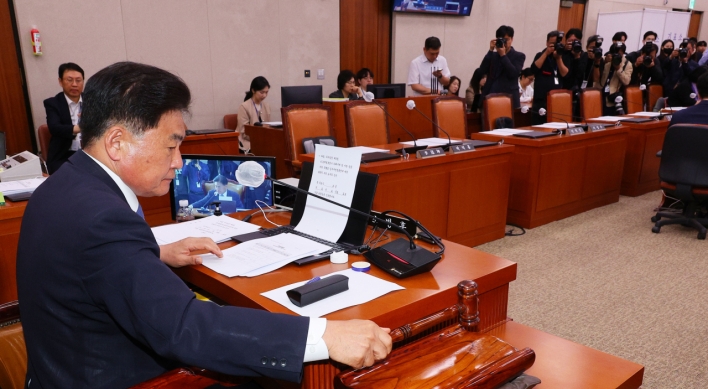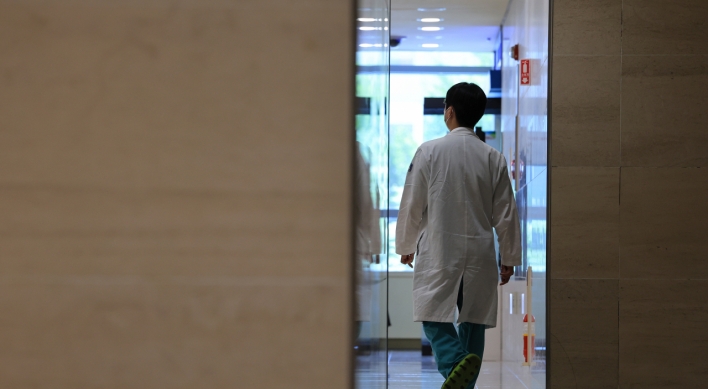[Editorial] Back to basics
Infections rise sharply in Seoul area; more sickbeds needed
By Korea HeraldPublished : Aug. 18, 2020 - 05:30
The recent resurgence in the number of new coronavirus infections is unusual.
The daily tally of new COVID-19 cases jumped to 279 as of midnight Sunday, from 56 reported Thursday. It was a nearly fivefold jump in three days.
The new coronavirus is spreading at a dizzying pace. At this rate, the number will top 1,000 in several days. Then contact tracing and testing will be very difficult, and medical resources will likely run short.
The rapid spread of the virus raises the specter of the COVID-19 crisis in Daegu and North Gyeongsang Province in February and March. At that time, the daily number of new infections in Daegu topped 900 in eight days.
More concerning is the place where the recent new infections occurred. They are concentrated in Seoul and Gyeonggi Province, which surrounds the capital, with 245 cases reported in the area on Sunday.
About half of the nation’s population lives in Seoul and its closest province, so the risk of the virus’s faster and wider diffusion is much greater. The capital region has many high-risk locations including religious facilities, nursing homes and entertainment spots. Public health authorities will likely have a hard time controlling the disease if they fail to respond proactively. Probably, that is why the government rushed to increase the level of social distancing in Seoul and its neighboring areas by one notch to Level 2 in its three-tier system.
The authorities have managed to slow the spread of infections thanks to the devotion of medical staff and citizens’ compliance with preventive measures. Even as Japan reported about 1,000 new cases a day, Korea managed to keep its daily numbers in the 20-50 range.
But as the epidemic has become prolonged, people have become less wary and less attentive to social distancing.
Infection clusters have occurred in high-risk facilities including nightclubs, call centers, distribution centers and hostess bars. More recently, sporadic infections have been reported in everyday venues including churches, a fast-food franchise, a large traditional market, offices, schools and coffee shops.
More people began meeting in person, limited numbers of spectators were allowed in stadiums to watch pro baseball games, and museums and libraries opened their doors again. The government began to promote eating out to revive domestic consumption. It needs to examine its COVID-19 prevention strategy to check for holes.
Also, the large street rallies held in Seoul on Saturday are worrisome. Lately, many infections have been tied to churches. Followers must take tests and actively observe quarantine measures.
In a situation where no vaccines or reliable medicines have been developed, the best way for a community to survive is for each member to comply with prevention guidance. Harm can be prevented by breaking the chain of infection. Residents in Seoul and Gyeonggi Province must practice social distancing thoroughly to prevent a nationwide resurgence.
The authorities must also brace for an explosive spread of infections by increasing the number of sickbeds and medical staff specialized in the treatment of the epidemic.
Seoul and Gyeonggi Province have a total of 1,479 sickbeds for modest cases of serious infectious disease and 339 for serious cases. As of Sunday at 2 p.m., there were 797 unoccupied sickbeds for modest cases and 97 for serious cases. For critical care patients, the occupancy rate is already 71 percent. The nightmare of the serious shortage of sickbeds in Daegu and North Gyeongsang Province in February must not be repeated.
The authorities must also try to resolve conflicts with medical doctors quickly. The Korean Medical Association said its doctors will stage a second walkout Aug. 26-28 unless the government withdraws its plan to increase medical student enrollment. One cannot but wonder if the government should have raised the issue at a time like this. The public health authorities must brace for the worst -- a situation in which cases continue to multiply while doctors are on strike.
Now is the time to go back to the basics of epidemic prevention, once again.
The daily tally of new COVID-19 cases jumped to 279 as of midnight Sunday, from 56 reported Thursday. It was a nearly fivefold jump in three days.
The new coronavirus is spreading at a dizzying pace. At this rate, the number will top 1,000 in several days. Then contact tracing and testing will be very difficult, and medical resources will likely run short.
The rapid spread of the virus raises the specter of the COVID-19 crisis in Daegu and North Gyeongsang Province in February and March. At that time, the daily number of new infections in Daegu topped 900 in eight days.
More concerning is the place where the recent new infections occurred. They are concentrated in Seoul and Gyeonggi Province, which surrounds the capital, with 245 cases reported in the area on Sunday.
About half of the nation’s population lives in Seoul and its closest province, so the risk of the virus’s faster and wider diffusion is much greater. The capital region has many high-risk locations including religious facilities, nursing homes and entertainment spots. Public health authorities will likely have a hard time controlling the disease if they fail to respond proactively. Probably, that is why the government rushed to increase the level of social distancing in Seoul and its neighboring areas by one notch to Level 2 in its three-tier system.
The authorities have managed to slow the spread of infections thanks to the devotion of medical staff and citizens’ compliance with preventive measures. Even as Japan reported about 1,000 new cases a day, Korea managed to keep its daily numbers in the 20-50 range.
But as the epidemic has become prolonged, people have become less wary and less attentive to social distancing.
Infection clusters have occurred in high-risk facilities including nightclubs, call centers, distribution centers and hostess bars. More recently, sporadic infections have been reported in everyday venues including churches, a fast-food franchise, a large traditional market, offices, schools and coffee shops.
More people began meeting in person, limited numbers of spectators were allowed in stadiums to watch pro baseball games, and museums and libraries opened their doors again. The government began to promote eating out to revive domestic consumption. It needs to examine its COVID-19 prevention strategy to check for holes.
Also, the large street rallies held in Seoul on Saturday are worrisome. Lately, many infections have been tied to churches. Followers must take tests and actively observe quarantine measures.
In a situation where no vaccines or reliable medicines have been developed, the best way for a community to survive is for each member to comply with prevention guidance. Harm can be prevented by breaking the chain of infection. Residents in Seoul and Gyeonggi Province must practice social distancing thoroughly to prevent a nationwide resurgence.
The authorities must also brace for an explosive spread of infections by increasing the number of sickbeds and medical staff specialized in the treatment of the epidemic.
Seoul and Gyeonggi Province have a total of 1,479 sickbeds for modest cases of serious infectious disease and 339 for serious cases. As of Sunday at 2 p.m., there were 797 unoccupied sickbeds for modest cases and 97 for serious cases. For critical care patients, the occupancy rate is already 71 percent. The nightmare of the serious shortage of sickbeds in Daegu and North Gyeongsang Province in February must not be repeated.
The authorities must also try to resolve conflicts with medical doctors quickly. The Korean Medical Association said its doctors will stage a second walkout Aug. 26-28 unless the government withdraws its plan to increase medical student enrollment. One cannot but wonder if the government should have raised the issue at a time like this. The public health authorities must brace for the worst -- a situation in which cases continue to multiply while doctors are on strike.
Now is the time to go back to the basics of epidemic prevention, once again.
-
Articles by Korea Herald










![[Kim Seong-kon] Democracy and the future of South Korea](http://res.heraldm.com/phpwas/restmb_idxmake.php?idx=644&simg=/content/image/2024/04/16/20240416050802_0.jpg&u=)









![[Today’s K-pop] Zico drops snippet of collaboration with Jennie](http://res.heraldm.com/phpwas/restmb_idxmake.php?idx=642&simg=/content/image/2024/04/18/20240418050702_0.jpg&u=)